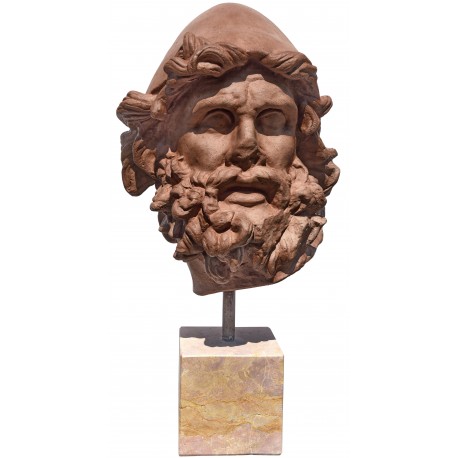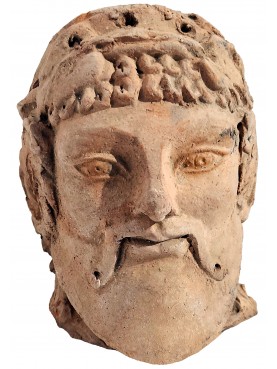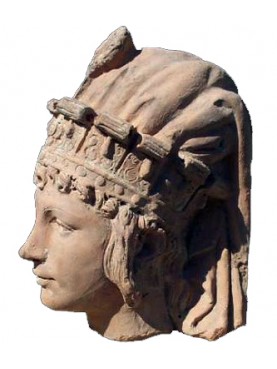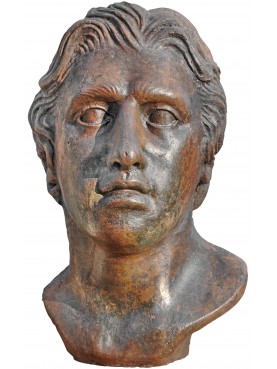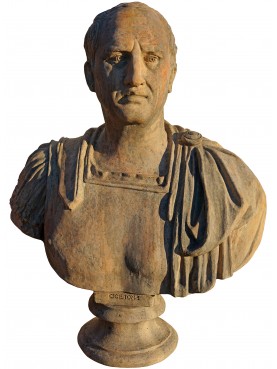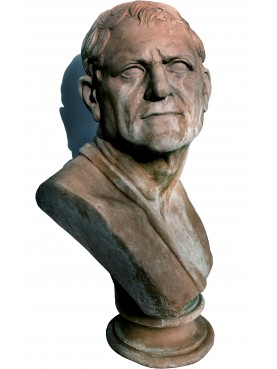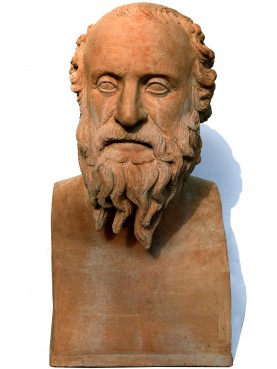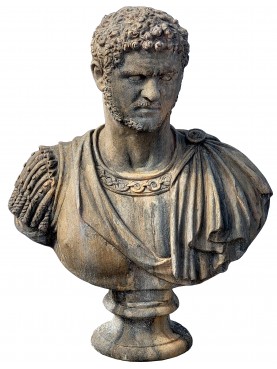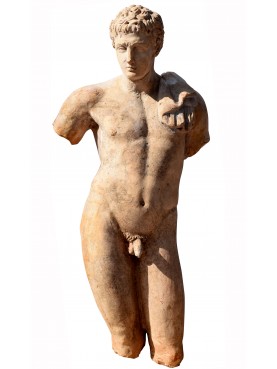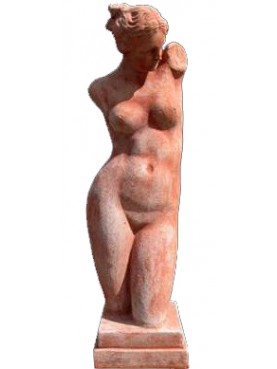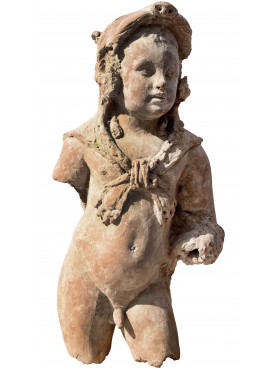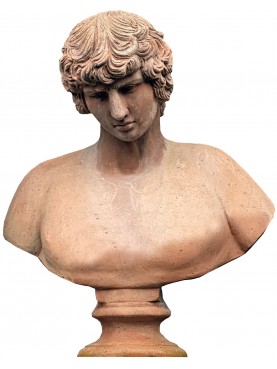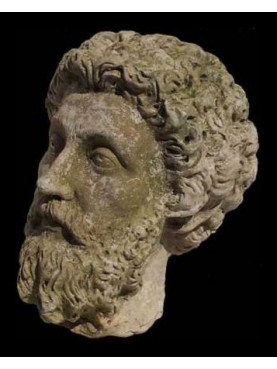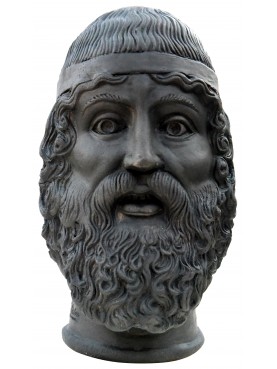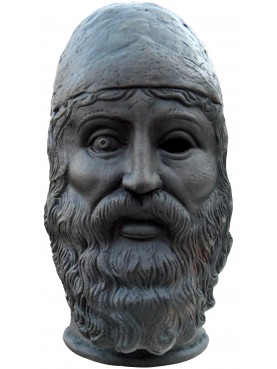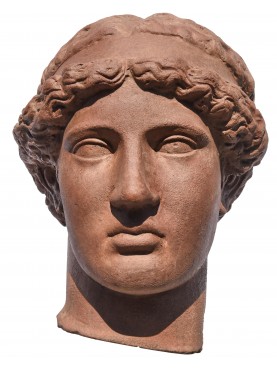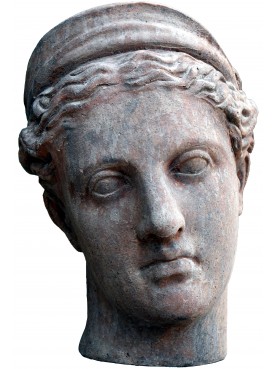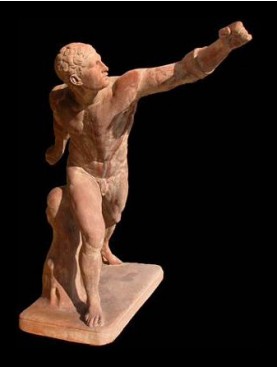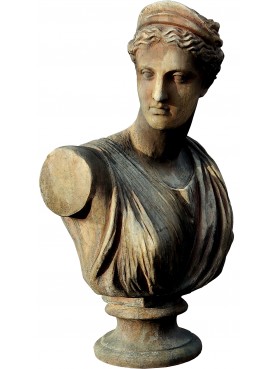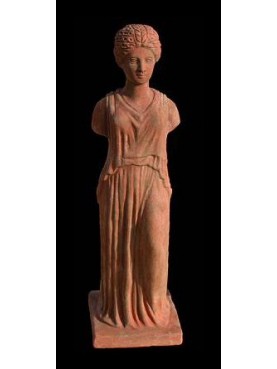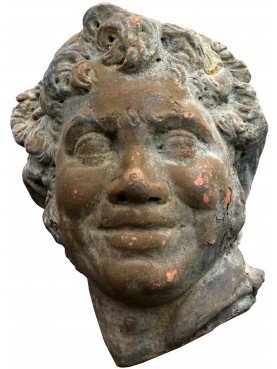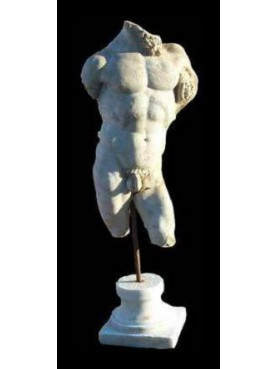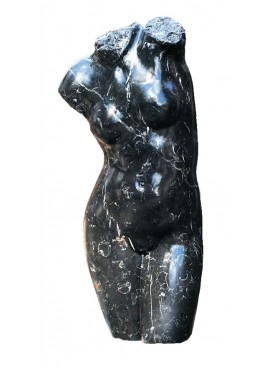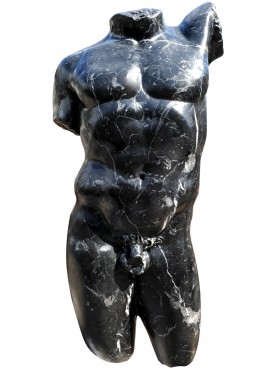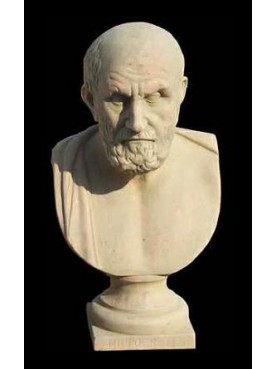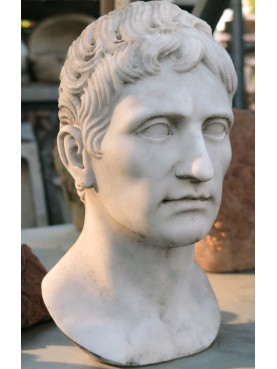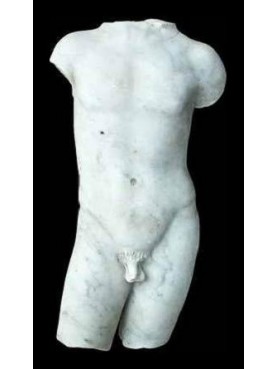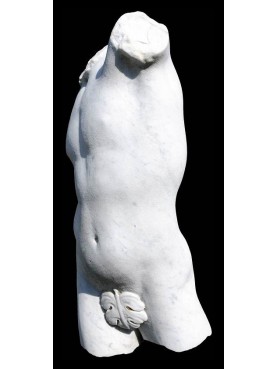Ulisses head - Terracotta - Ulysses of the Polyphemus group
Ulisses head - Terracotta - Ulysses of the Polyphemus group
12194
New
Hand made head in terracotta, our exclusive production.
Hand made in Italy.
The head is part of the sculptural group found in 1957 in a cave in the villa of Tiberius in Sperlonga.
Sculptors: Agesander, Atanodoro and Polidoro.
Base excluded.
We have also a plaster cast head:
10 Available
Data sheet
| Height | 22.83 in | 58 cm |
| Width | 13.39 in | 34 cm |
| Depth | 9.84 in | 25 cm |
| Weight | 17.64 lbs | 8 Kg |
| Artist / Creator / Architect | Agesandro, Atanodoro e Polidoro | |
| Square base | 6.69 in X 6.69 in | 17 x 17 cm |
| Material | Plaster cast | |
| Measurements of the base (not included) | 5.51 in X 5.51 in | 14x14 cm |
| Note 01 | From the Tiberio's Sperlonga Villa |
More info
Odysseus, also known by the Latin name Ulysses Latin: Ulyssēs, Ulixēs), was a legendary Greek king of Ithaca and the hero of Homer's epic poem the Odyssey. Odysseus also plays a key role in Homer's Iliad and other works in that same epic cycle.
Husband of Penelope, father of Telemachus, and son of Laërtes and Anticlea, Odysseus is renowned for his brilliance, guile, and versatility (polytropos), and is hence known by the epithet Odysseus the Cunning (mētis, or "cunning intelligence"). He is most famous for the Odyssey, ten eventful years he took to return home after the decade-long Trojan War.
The name has several variants: in Greek the character was called Olysseus (Ὀλυσσεύς), Oulixeus (Οὐλιξεύς), Oulixes (Οὐλίξης), and he was known as Ulyssēs in Latin or Ulixēs in Roman mythology. Hence, "there may originally have been two separate figures, one called something like Odysseus, the other something like Ulixes, who were combined into one complex personality."
The etymology of the name is unknown. Ancient authors linked the name to the Greek verbs odussomai (Greek: ὀδύσσομαι) 'to be wroth against, to hate',[3] or to oduromai (ὀδύρομαι) 'to lament, bewail'. Homer in references and puns, relates it to various forms of this verb. It has also been suggested that the name is of non-Greek origin, probably not even Indo-European, with an unknown etymology; R. S. P. Beekes has suggested a Pre-Greek origin.
In Book 19 of the Odyssey, where Odysseus's early childhood is recounted, Euryclea asks Autolycus to name him. Euryclea tries to guide him to naming the boy Polyaretos, "for he has much been prayed for" (19.403f). Autolycus "apparently in a sardonic mood ... decided to give the child a name that would commemorate his own experience in life. 'Because I got odium upon myself before coming here ... from many ... let the child's name be Odysseus to signify this.' The pun was prophetic as well as commemorative." Odysseus often receives the patronymic epithet Laertiades (Λαερτιάδης), "son of Laërtes".
In the Iliad and Odyssey there are several epithets used to describe Odysseus.
His name and stories were adopted into Etruscan religion under the name Uthuze.
Source Wikipedia
Polyphemus group.
This wonderful Ulysses head comes from the Polyphemus group.
A group of statues discovered in 1957 in a cave in the villa of Tiberio in Sperlonga (Latina).
The Ulysses sculptural group that blinds Polifemo, also known as the Polyphem Group, is a marble work of the sculptors Agesandro, Atanodoro and Polidoro dating to the 1st century AD. Around and kept in the National Archaeological Museum of Sperlonga (province of Latina).

